一、准备相关环境
1、如果环境没有网络,我们准备可以拿光盘做yum源来安装相应的软件
[root@centso-test ~]# mkdir /media/cdrom # 创建挂载点 [root@centso-test ~]# mount -r -t iso9660 /dev/dvd /media/cdrom/ [root@centso-test ~]# mount # 查看是否挂载成功 .......以上省略..... /dev/sr0 on /media/cdrom type iso9660 (ro) # 显示挂载成功。
新建光盘YUM源
在/etc/yum.repos.d/目录下新建以 .repo结尾的文件,文件内容如下
[cdrom_yum] name=cdrom_yum baseurl=file///media/cdrom enabled=1 gpgcheck=0
如果想开机自动挂载,要不然每次关机后,都需要重新挂载光盘才能使用光盘YUM源
修改配置文件/etc/fstab
增加一行
/dev/dvd /media/cdrom iso9660 defaults 0 0 挂载设备 挂载目录 文件类型 挂载选项 0表示从不备份 0表示从不自检
2、需要安装软件 DHCP tftp http
配置TFTP
[root@centso-test ~]# yum -y install xinetd tftp-server tftp # 安装所需软件 [root@centso-test ~]# chkconfig --list # 查看以xinetd管理的服务 。。。。以上部份省略。。。。。 udev-post 0:off 1:on 2:on 3:on 4:on 5:on 6:off xinetd 0:off 1:off 2:off 3:on 4:on 5:on 6:off xinetd based services: chargen-dgram: off chargen-stream: off daytime-dgram: off daytime-stream: off discard-dgram: off discard-stream: off echo-dgram: off echo-stream: off tcpmux-server: off tftp: off # 发现tftp是关闭的,我们启用之 time-dgram: off time-stream: off [root@centso-test ~]# chkconfig xinetd on # 设为开机启动 [root@centso-test ~]# chkconfig tftp on # 设为开机启动 [root@centso-test ~]# service xinetd start # 由于我们的tfpt是由xinetd管理的所以这里我们启动xinetd [root@centso-test ~]# ss -unl | grep 69 # 查看是否启动成功。tftp默认使用69端口 UNCONN 0 0 *:69 *:* #存在,己经启动成功
设置共享目录:
# vim /etc/xinetd.d/tftp # 把这项server_args = -s /var/lib/tftpboot
准备ftpboot下的文件
[root@desktop ~]# yum -y install syslinux [root@desktop ~]# cp /usr/share/syslinux/pxelinux.0 /var/lib/tftpboot/
[root@desktop ~]# cp /media/cdrom/p_w_picpaths/pxeboot/{vmlinuz,initrd.img} /var/lib/tftpboot/
[root@desktop ~]# cp /media/cdrom/isolinux/{boot.msg,vesamenu.c32,splash.jpg} /var/lib/tftpboot/
[root@desktop ~]# mkdir /var/lib/tftpboot/pxelinux.cfg [root@desktop ~]# cp /media/cdrom/isolinux/isolinux.cfg /var/lib/tftpboot/pxelinux.cfg/default
[root@desktop ~]# chmod u+w /var/lib/tftpboot/pxelinux.cfg/default [root@desktop ~]# vim /var/lib/tftpboot/pxelinux.cfg/default 把第一行改成default linux
配置dhcp服务器
[root@desktop ~]# yum -y install dhcp
[root@desktop ~]# vim /etc/dhcp/dhcpd.conf # 修改配置文件内容如下
#
# DHCP Server Configuration file.
# see /usr/share/doc/dhcp*/dhcpd.conf.sample
# see 'man 5 dhcpd.conf'
#
subnet 172.16.0.0 netmask 255.255.0.0{
reage 172.16.0.1 172.16.0.100
next-server 172.16.0.1
filename "pxelinux.0"
}
[root@desktop ~]# vim /etc/sysconfig/network-scripts/ifcfg-eth0 BOOTPROTO=none IPADDR=172.16.0.1 NETMASK=255.255.0.0 GETEWAY=172.16.0.1 DNS1=172.16.0.1 关闭防火墙和selinux ,要不然dhcpd服务无法启动。
[root@desktop Desktop]# chkconfig dhcpd on [root@desktop Desktop]# service dhcpd start
配置安装树,HTTP
[root@desktop Desktop]# yum -y install http [root@desktop Desktop]# mkdir /var/www/html/centos6 [root@desktop Desktop]# mount --bind /media/cdrom/ /var/www/html/centos6/ or cp -r /media/cdrom/* /var/www/html/centos6/ 我使用此方法,因为后面我还要复制annakanda.ks.conf文件到这目录下完成自动化安装 [root@desktop Desktop]# chkconfig httpd on [root@desktop Desktop]# service httpd start Starting httpd: httpd: apr_sockaddr_info_get() failed for desktop httpd: Could not reliably determine the server's fully qualified domain name, using 127.0.0.1 for ServerName [ OK ]
-----------------------通过PXE启动测试手动安装是否有问题 -------------------
启动客户端,设置从网卡启动,
出现如下原因:检查
1、vim /etc/dhcp/dhcpd.conf 中的filename "pxlinux.0"记录是否存在,与/var/lib/tftpboot下对应 2、/var/lib/tftpboot/pxlinux.0 文件是否有读权限 3、如修改了/etc/dhcp/dhcpd.conf 文件后需重启dhcpd服务才可以
至此手动安装没有问题 ------------------------
准备annakanda.ks.cfg文件实现自动安装---
我们可以使用系统中存在的anakanda.ks.cfg文件做模板来设置
# cd ~ # 切换到家目录 # cp anakanda.ks.cfg /tmp/ks.cfg
# system-config-kickstart # 此命令默认没有安装,需要在桌面环境下使用,不然会提示x server没有运行
使用kickstart部骤如下
如果使用模板的话启动kickstart后,点file--->open file,载入后再进行配置
安装前准备完成。下面准备yum源和指定需要安装的包
# cp ~root/ks.cfg /var/
[root@desktop ~]# vim /var/www/html/centos6/ks.cfg
#platform=x86, AMD64, or Intel EM64T #version=DEVEL # Firewall configuration firewall --disabled # Install OS instead of upgrade install # Use network installation url --url="http://172.16.0.1/centos6" # Root password rootpw --iscrypted $1$qsPEkP0S$OCIXeAxJxeg522h4KlBYt/ # System authorization information auth --useshadow --passalgo=sha512 # Use graphical install graphical firstboot --disable # System keyboard keyboard us # System language lang en_US # SELinux configuration selinux --disabled # Installation logging level logging --level=info # System timezone timezone Asia/Shanghai # Network information network --bootproto=dhcp --device=eth0 --onboot=on # System bootloader configuration bootloader --location=mbr # Clear the Master Boot Record zerombr # Partition clearing information clearpart --all --initlabel # Disk partitioning information part / --fstype="ext4" --size=15000 part swap --fstype="swap" --size=1000 repo --name="CentOS" --baseurl=http://172.16.0.1/centos6 --cost=100 %packages @base @core @debugging @basic-desktop @desktop-debugging @desktop-platform @directory-client @fonts @general-desktop @graphical-admin-tools @input-methods @internet-applications @internet-browser @java-platform @legacy-x @network-file-system-client @office-suite @print-client @remote-desktop-clients @server-platform @server-policy @workstation-policy @x11 mtools pax oddjob wodim sgpio genisop_w_picpath device-mapper-persistent-data abrt-gui samba-winbind certmonger pam_krb5 krb5-workstation libXmu %end
kickstart文件的组成部份:分为三段,命令段、软件包段、脚本段
命令段:用于配置系统
install
firwall
part
lv
软件包:指定要安装的程序组及程序包(@组包)及程序包(程序包名)每行一个
%packages包组
@Base #使用@表示组
lftp # 表示单个包
%end 表示软件包安装结束
注意:在程序包名称之前附加“-”号,表示不希望安装。
脚本段: (不是必须的)
%pre:安装过程开始之前执行的安装预备脚本 %表示段
所能执行的操作较小,它是一个受限的环境 ,因为其仅有
配置引导程能自动加载此kickstart文件
[root@desktop ~]# cd /var/lib/tftpboot/pxelinux.cfg/ [root@desktop pxelinux.cfg]# vim default
在label为linux项的append一行后附加:
ks=http://HTTP_SERVER_IP/ks.cfg
在文件append initrd=initrd.img 后增加ks.cfg文件路径 ks=http://172.16.0.1/centos6/ks.cfg
default linux #prompt 1 timeout 600 display boot.msg menu background splash.jpg menu title Welcome to CentOS 6.5! menu color border 0 #ffffffff #00000000 menu color sel 7 #ffffffff #ff000000 menu color title 0 #ffffffff #00000000 menu color tabmsg 0 #ffffffff #00000000 menu color unsel 0 #ffffffff #00000000 menu color hotsel 0 #ff000000 #ffffffff menu color hotkey 7 #ffffffff #ff000000 menu color scrollbar 0 #ffffffff #00000000 label linux menu label ^Install or upgrade an existing system menu default kernel vmlinuz append initrd=initrd.img ks=http://172.16.0.1/centos6/ks.cfg label vesa menu label Install system with ^basic video driver kernel vmlinuz append initrd=initrd.img xdriver=vesa nomodeset label rescue menu label ^Rescue installed system kernel vmlinuz append initrd=initrd.img rescue
转载于:https://blog.51cto.com/zkxfoo/1607623







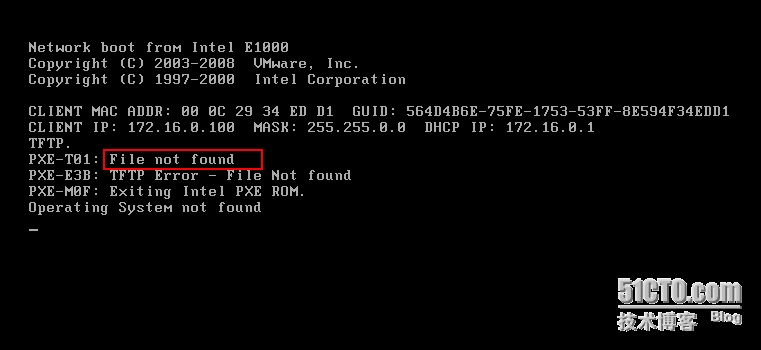
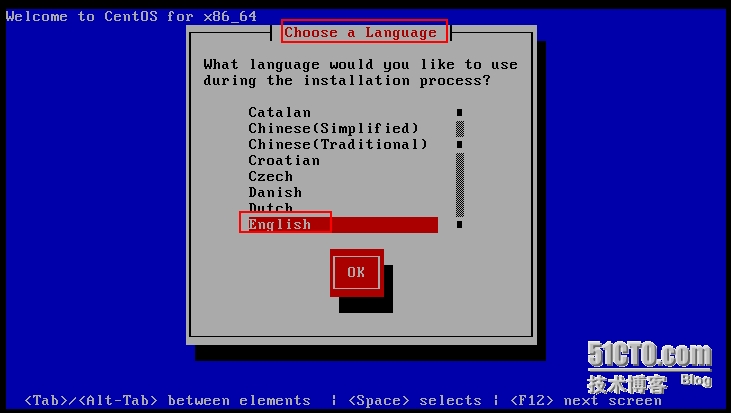
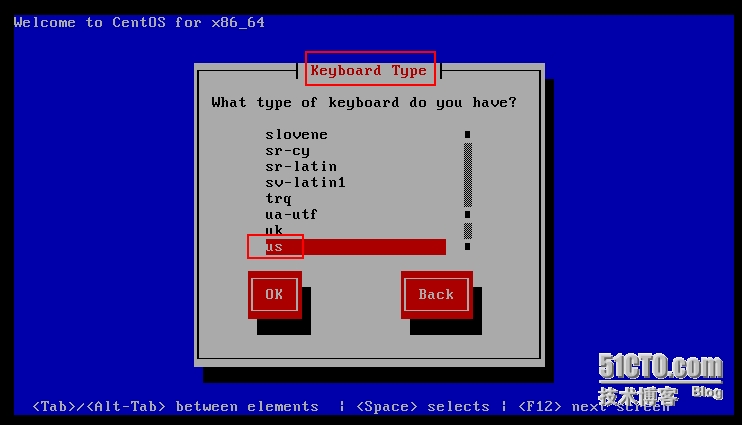
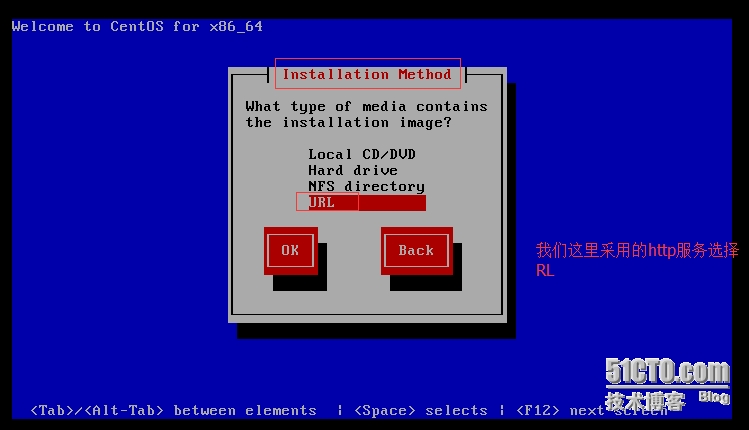
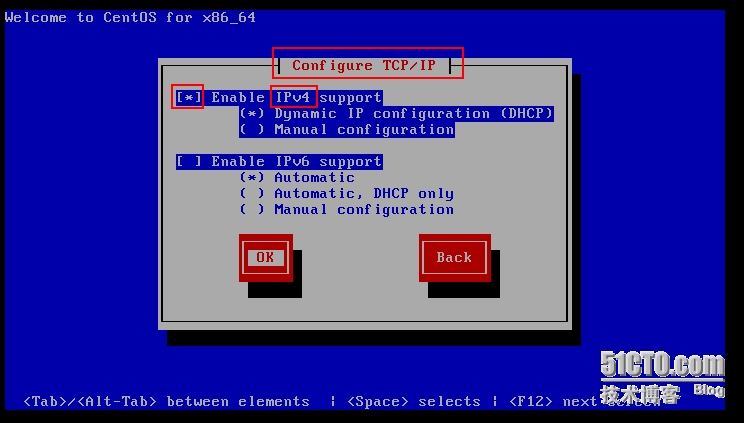
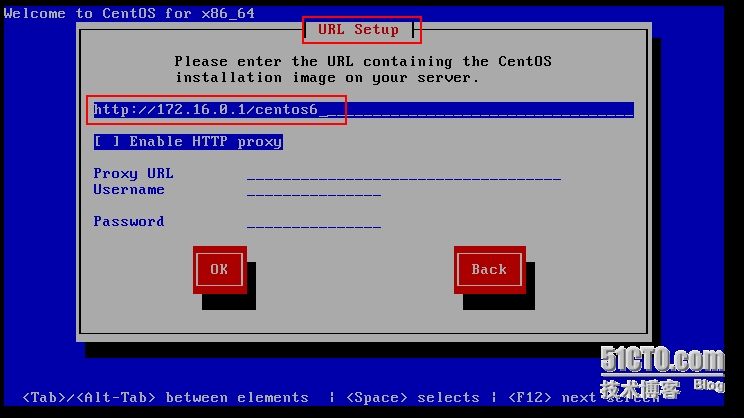

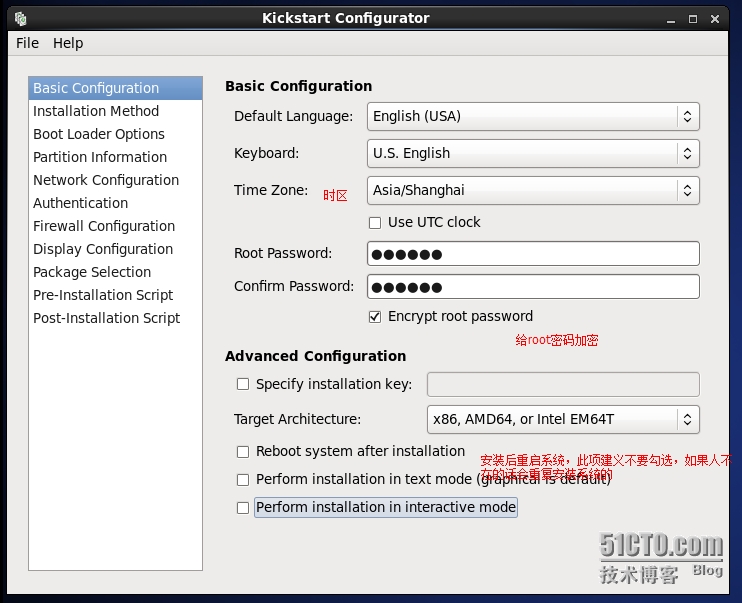
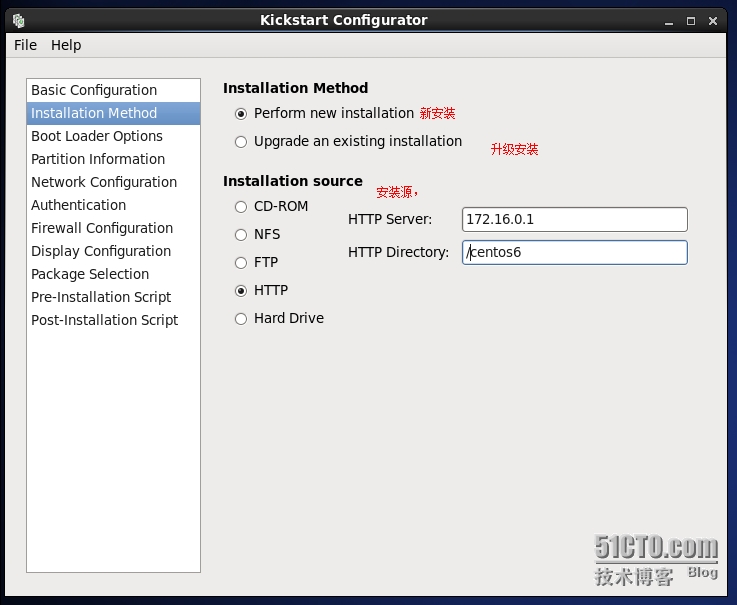
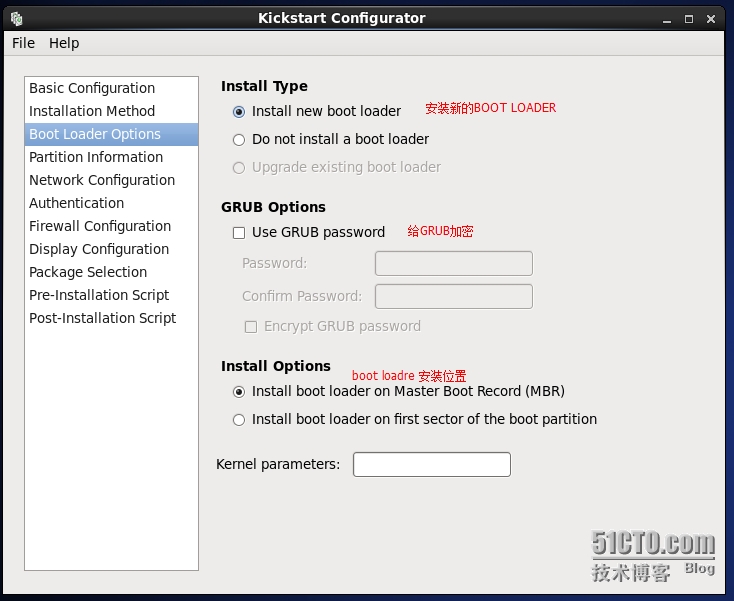
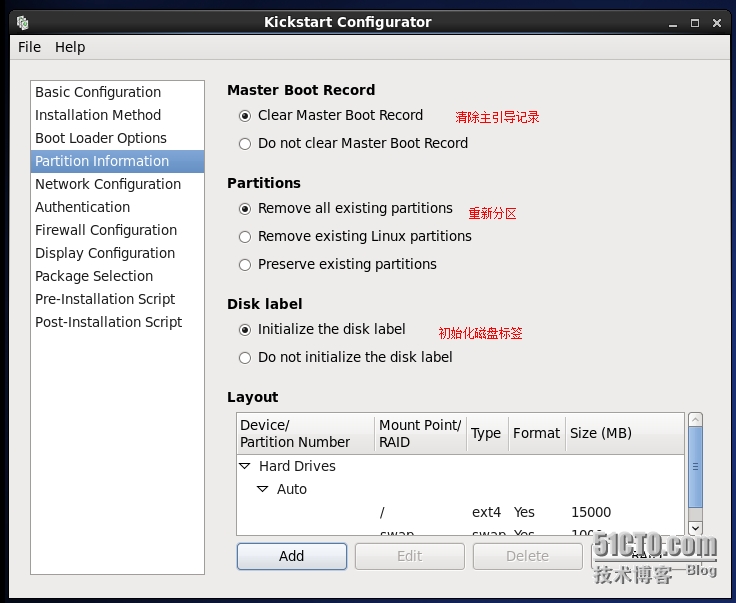
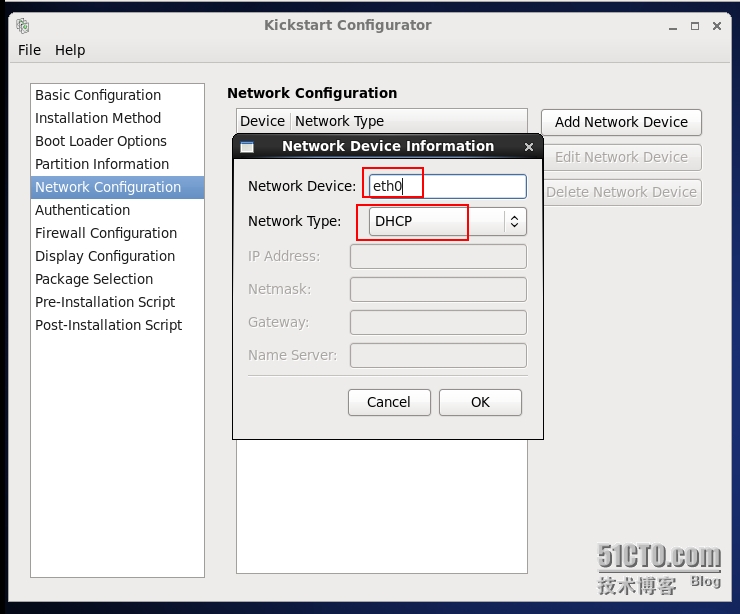
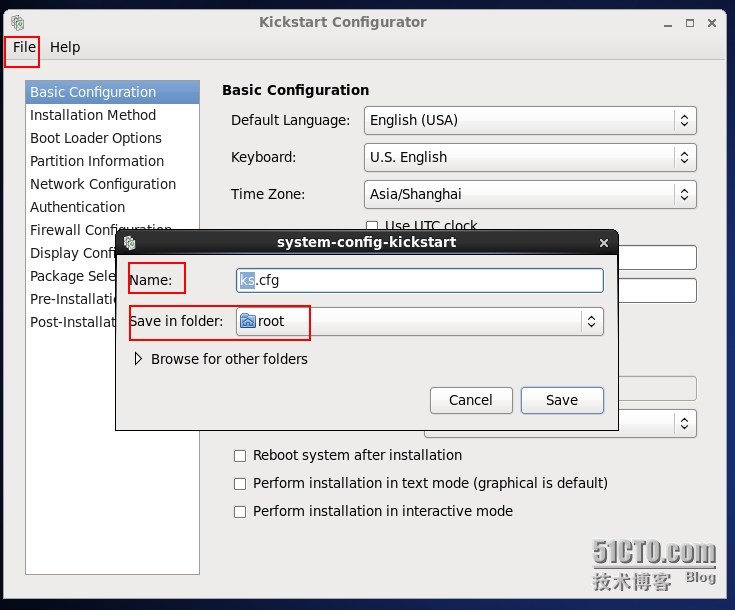














 598
598











 被折叠的 条评论
为什么被折叠?
被折叠的 条评论
为什么被折叠?








